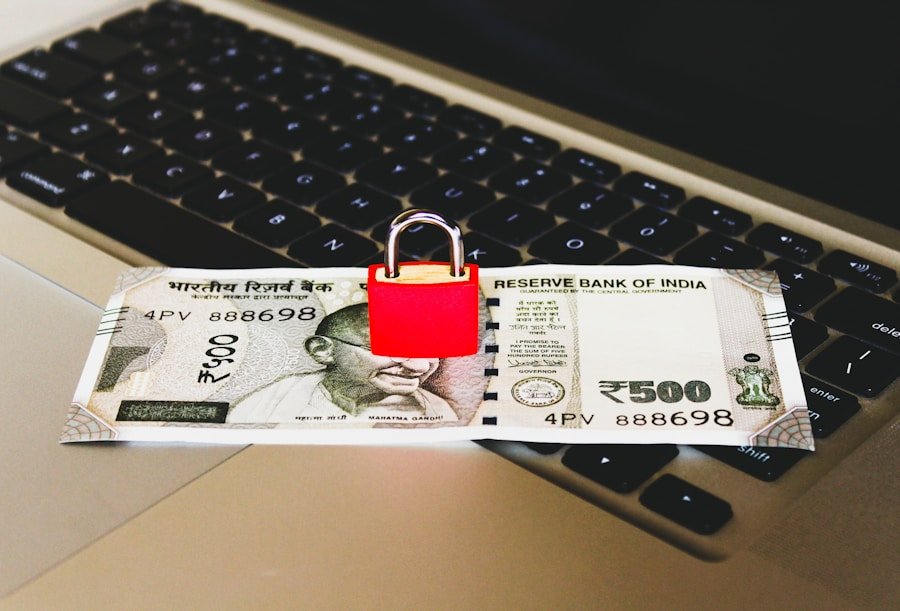The digital landscape has become a breeding ground for various types of scams, each designed to exploit unsuspecting individuals. One prevalent form is phishing, where scammers impersonate legitimate entities, such as banks or popular online services, to trick users into providing sensitive information. Phishing can occur through emails, text messages, or even social media platforms.
For instance, a user might receive an email that appears to be from their bank, urging them to click on a link to verify their account details. Once the user clicks the link, they are directed to a fraudulent website that closely resembles the bank’s official site, where they unwittingly enter their login credentials. Another common type of online scam is the advance-fee scam, which often lures victims with promises of large sums of money in exchange for a small upfront payment.
These scams can take various forms, including lottery winnings, inheritance claims, or business opportunities. A classic example involves an email claiming that the recipient has won a lottery they never entered. To claim their prize, they are instructed to pay a processing fee.
Once the fee is paid, the scammer disappears, leaving the victim with nothing but a lighter wallet and a sense of betrayal. Understanding these common scams is crucial for anyone navigating the online world, as awareness is the first step in prevention.
Key Takeaways
- Online scams come in various forms, including phishing, fake websites, and investment fraud.
- Red flags in online communications include unsolicited requests for personal information and urgent demands for money.
- It’s important to verify the legitimacy of websites and online sellers by checking for secure payment methods and contact information.
- Protect personal and financial information by using strong, unique passwords and being cautious about sharing sensitive details online.
- Research and read reviews before making online purchases to ensure the credibility of the seller and the quality of the product.
Recognizing Red Flags in Online Communications
Identifying red flags in online communications can significantly reduce the risk of falling victim to scams. One of the most telling signs is poor grammar and spelling. Many scammers operate from non-English speaking countries and may not have a strong command of the language.
Emails or messages filled with typos, awkward phrasing, or unusual sentence structures should raise immediate suspicion. For example, a message claiming to be from a reputable company that contains multiple grammatical errors is likely not legitimate. Another red flag is urgency or pressure tactics.
Scammers often create a false sense of urgency to compel individuals to act quickly without thinking critically. An email that states, “Your account will be suspended unless you verify your information within 24 hours!” is designed to provoke panic and prompt hasty decisions. Legitimate organizations typically do not employ such aggressive tactics; they provide ample time for customers to respond and verify information at their own pace.
Recognizing these red flags can empower individuals to pause and assess the situation before taking any action.
Verifying the Legitimacy of Websites and Online Sellers

Before engaging with any website or online seller, it is essential to verify their legitimacy. One effective method is to check for secure connections by looking for “https://” in the URL rather than just “http://.” The “s” indicates that the site uses encryption to protect data transmitted between the user and the website. Additionally, reputable websites often display security badges from recognized organizations, which can provide further assurance of their legitimacy.
Another critical step in verifying a website’s authenticity is conducting a domain name search. Scammers frequently use domain names that closely resemble those of legitimate businesses but may have slight variations or additional characters. For instance, a scam site might use “bankofarned.com” instead of “bankofamerica.com.” Tools like WHOIS can help users check who registered the domain and when it was created.
A recently registered domain with no clear ownership information should raise concerns about its legitimacy. By taking these precautions, individuals can significantly reduce their risk of falling prey to fraudulent websites. For more information on website legitimacy and security, you can visit this link: FTC – Shopping Online
Protecting Personal and Financial Information
| Metrics | 2018 | 2019 | 2020 |
|---|---|---|---|
| Number of reported data breaches | 1,244 | 1,473 | 1,001 |
| Percentage of consumers concerned about personal data security | 67% | 72% | 76% |
| Amount of money lost due to identity theft | 16.9 billion | 17.9 billion | 16.9 billion |
In an age where personal and financial information is increasingly vulnerable to theft, safeguarding this data is paramount. One fundamental practice is to use strong, unique passwords for different accounts. A strong password typically includes a mix of uppercase and lowercase letters, numbers, and special characters.
Additionally, utilizing password managers can help individuals keep track of their passwords securely without resorting to easily guessable options. Moreover, enabling two-factor authentication (2FA) adds an extra layer of security to online accounts. This feature requires users to provide two forms of identification before accessing their accounts—usually something they know (like a password) and something they have (like a smartphone app that generates a verification code).
Even if a scammer manages to obtain a user’s password through phishing or other means, they would still be unable to access the account without the second form of verification. By implementing these strategies, individuals can significantly enhance their protection against identity theft and financial fraud.
Researching and Reading Reviews
Before making any online purchase or engaging with a new service, conducting thorough research is essential. One effective way to gauge the reliability of a seller or service provider is by reading customer reviews. Websites like Trustpilot, Yelp, and Google Reviews offer platforms where consumers can share their experiences with various businesses.
A pattern of negative reviews or complaints about unfulfilled orders can serve as a warning sign that a seller may not be trustworthy. Additionally, it’s important to consider the overall volume of reviews and their recency. A business with only a handful of reviews or predominantly positive feedback from accounts that appear newly created may be engaging in deceptive practices.
Scammers often create fake reviews to bolster their credibility. Therefore, looking for reviews from verified purchasers or long-standing accounts can provide more reliable insights into a seller’s reputation. Engaging in this due diligence can help consumers make informed decisions and avoid potential scams.
Using Secure Payment Methods

When shopping online, it is essential to choose secure payment methods to safeguard financial information.
### Credit Cards: A Safer Option
Credit cards are generally considered safer than debit cards because they offer better fraud protection. If unauthorized charges occur, cardholders can dispute them without losing access to their bank funds immediately. Additionally, many credit card companies provide zero-liability policies that protect consumers from fraudulent transactions.
### Digital Wallets: An Added Layer of Security
Another secure option is using digital wallets like PayPal or Apple Pay. These services act as intermediaries between buyers and sellers, allowing users to make purchases without directly sharing their credit card information with merchants. This added layer of security can help mitigate risks associated with data breaches on e-commerce sites.
### Buyer Protection Programs
Furthermore, some digital wallets offer buyer protection programs that can assist in resolving disputes over transactions that do not go as planned. By opting for secure payment methods, consumers can significantly reduce their exposure to financial fraud.
Reporting Suspected Scams to Authorities
When encountering suspected scams, reporting them to the appropriate authorities is vital for protecting others from falling victim to similar schemes. In many countries, there are dedicated agencies responsible for handling fraud complaints. For instance, in the United States, individuals can report scams to the Federal Trade Commission (FTC) through their website or by calling their consumer hotline.
The FTC collects data on scams and uses it to inform law enforcement agencies about emerging trends. Additionally, local law enforcement agencies may also take reports on scams that target residents within their jurisdiction. Reporting scams not only helps authorities track down perpetrators but also contributes to raising awareness about prevalent scams in specific areas.
Many states have consumer protection offices that work alongside federal agencies to combat fraud at both local and national levels. By taking the initiative to report suspicious activities, individuals play an essential role in creating a safer online environment for everyone.
Educating Others about Online Scams and Fraud Prevention
One of the most effective ways to combat online scams is through education and awareness-raising efforts within communities. Sharing knowledge about common scams and red flags can empower friends and family members to recognize potential threats before they fall victim. Hosting workshops or informational sessions at local community centers or schools can provide valuable insights into safe online practices and how to identify fraudulent communications.
Social media platforms also serve as powerful tools for spreading awareness about online scams. By sharing articles, infographics, or personal experiences related to scams encountered online, individuals can reach a broader audience and encourage discussions about fraud prevention strategies. Additionally, collaborating with local businesses or organizations focused on consumer protection can amplify these efforts and foster a community-wide commitment to vigilance against online fraud.
Educating others not only helps protect individuals but also strengthens community resilience against scammers who prey on unsuspecting victims.
If you are looking for more information on how to identify scams online, you may want to check out the article on appssoftwares.com. This article provides valuable insights into common online scams and offers tips on how to protect yourself from falling victim to them. By understanding the warning signs and red flags of scams, you can better safeguard your personal information and financial security while browsing the internet.
FAQs
What are online scams?
Online scams are fraudulent schemes that deceive individuals into providing personal information, money, or other valuable assets to the scammer. These scams can occur through email, social media, websites, or other online platforms.
How can I identify online scams?
You can identify online scams by being cautious of unsolicited emails or messages, verifying the legitimacy of websites and businesses, and being wary of requests for personal or financial information. Additionally, look out for offers that seem too good to be true and be cautious of high-pressure sales tactics.
What are common types of online scams?
Common types of online scams include phishing scams, where scammers attempt to obtain sensitive information such as passwords and credit card numbers, as well as investment scams, romance scams, and fake charity scams. Other types include lottery and prize scams, tech support scams, and work-from-home scams.
How can I protect myself from online scams?
To protect yourself from online scams, it’s important to use strong, unique passwords for your online accounts, enable two-factor authentication when available, and be cautious of sharing personal information online. Additionally, regularly monitor your financial accounts for any unauthorized activity and keep your computer and devices updated with the latest security patches.
What should I do if I think I’ve been targeted by an online scam?
If you believe you’ve been targeted by an online scam, it’s important to report the scam to the appropriate authorities, such as the Federal Trade Commission (FTC) or the Internet Crime Complaint Center (IC3). Additionally, if you’ve provided personal or financial information to a scammer, it’s important to contact your financial institutions and credit bureaus to protect your accounts and credit.
